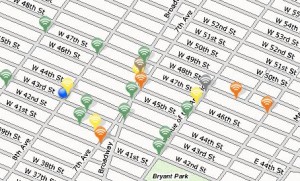
J.D Power released its network performance study and Verizon Wireless bested other carriers in most regions. Wireless customers are making fewer phone calls and texting more. smartphone customers have more problems than basic phone customers. There were fewer problems in Salt Lake City, Utah and the most problems in Sacramento, California the state capital.
For a 14th consecutive reporting period, Verizon Wireless ranks highest in he Northeast region. Verizon Wireless achieves fewer customer-reported problems with dropped calls, initial connections, transmission failures and late text messages, compared with the regional averages. Verizon Wireless also ranks highest in the Mid-Atlantic, Southeast, Southwest and West regions.
In the North Central region, U.S. Cellular ranks highest for a 12th consecutive reporting period. Compared with the regional average, U.S. Cellular has fewer customer-reported problems with dropped calls, failed initial connections, audio problems, failed voice mails and lost calls
- Fewer calls are being made or received. On average, wireless customers use 450 minutes per month, a decline of 77 minutes from 527 in 2009.
- Customers are using their devices more often for text messaging. The study finds that wireless customers sent/received an average of 39 text messages during an average two-day period.During the course of a month, this equals more than 500 incoming/outgoing text messages.
- On average, smartphone customers continue to experience more problems than do traditional handset customers--14PP100 vs. 12PP100, respectively. However, the largest gaps in reported problem rates occur with both calling and data activity. In these areas, problem rates among smartphone customers average 4 PP100 higher than among traditional device customers.
- Among the top 30 U.S. markets, average problem rates are lowest among wireless customers in the Salt Lake City market (9 PP100), and highest among wireless customers in the Sacramento market (16 PP100).
]]>
Read more
 Wireless an' mobile users want more Wi-Fi and would use it if it may data out faster and saved them money notes a new study by Smith Micro, conducted by uSamp. More owners of smartphones would use them as Wi-Fi hotspots if the feature wasn't so expensive. Many CTIA attendees use "unauthorized" apps for Wi-Fi hotspots and data tethering.
Wireless an' mobile users want more Wi-Fi and would use it if it may data out faster and saved them money notes a new study by Smith Micro, conducted by uSamp. More owners of smartphones would use them as Wi-Fi hotspots if the feature wasn't so expensive. Many CTIA attendees use "unauthorized" apps for Wi-Fi hotspots and data tethering.

